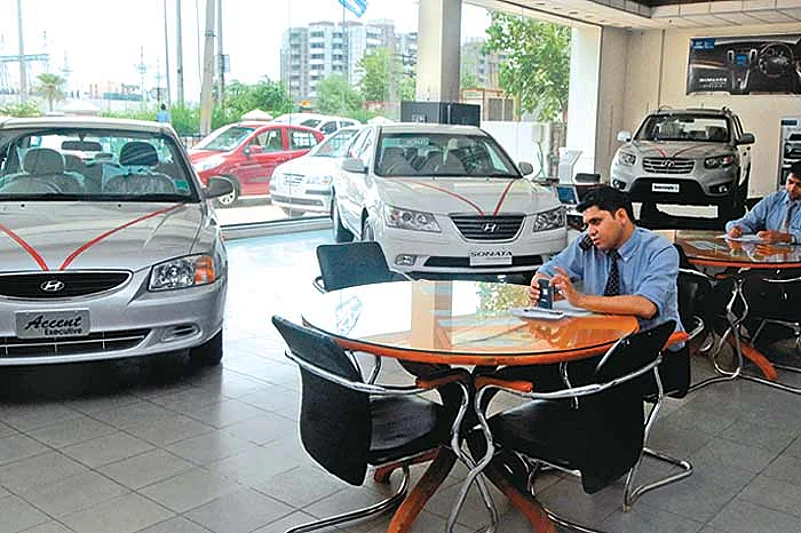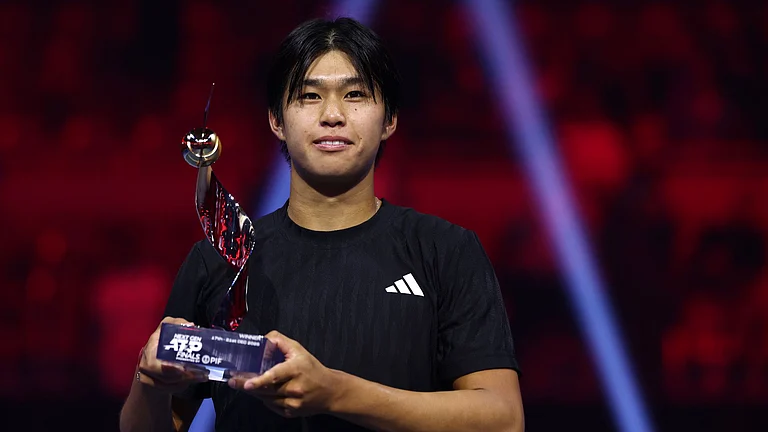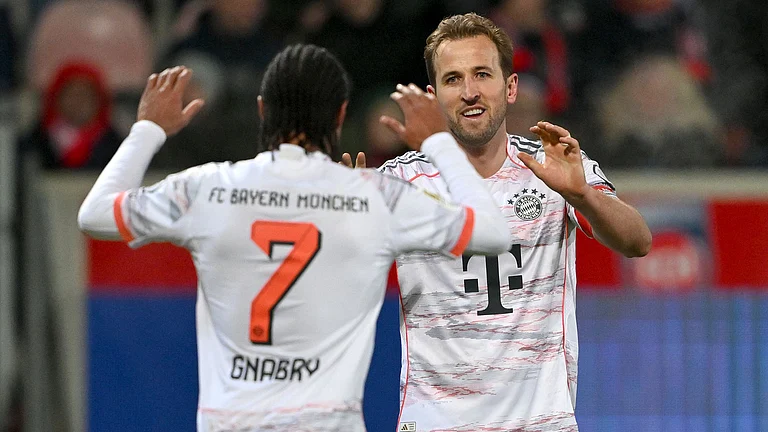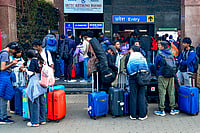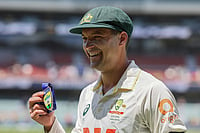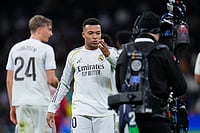Short On Drive
- High interest costs, inflation and zooming petrol rates are affecting car demand
- Worst-hit are entry-level (Alto, Santro, Swift) to mid-segment (Dzire, Honda City) cars
- Car prices up by 10-12 per cent due to rising interest costs
- Shift towards diesel cars, but industry doesn’t have capacity
- Despite some rebound in festive months, overall mood is negative. Expect discounts.
***
For an industry that has got used to driving on automatic at healthy double-digit growth rates, it’s nothing short of cataclysmic. Car sales have crashed in the past three months, worrying news from a sector seen as a bellwether for the Indian economy. After about 25 per cent growth over the past few years (and even during those nervy slowdown times in 2008 and 2009), alarm bells are clanging at the prospect of substantially lower growth.
Last week, industry body Society of Indian Automobile Manufacturers (SIAM) slashed its projection for 2011-12 passenger car sales growth from the earlier 16-18 per cent to 10-12 per cent. SIAM’s pessimism stems from the sector’s subdued performance in May, when the slide really began; June has been worse, clocking a minuscule 1.6 per cent growth (see graph).
While there are many explanations for the flagging consumer demand, rising interest rates tops the list. Considering 85 per cent of car purchases in India are financed, buyers have reacted negatively. “Interest rates are one of the highest we have seen in the last 7-8 years. This has affected customer affordability as many of them also have home loans and will face a combined impact of inflation and interest rates,” says Arvind Saxena, director, marketing and sales, Hyundai India. Interest for car loans is hovering between 10 and 12 per cent at present.
Rising petrol prices haven’t helped this downbeat mood either. The price of petrol has increased by almost 35 per cent from Rs 47.43 in February 2010 to Rs 63.70 in July 2011. With global prices of crude showing no mercy, petrol prices are unlikely to recede in the near future.
Car buyers have also been hit by higher acquisition cost as compared to last year as car manufacturers have effected significant price hikes. Says Prayesh Jain, AVP, Research, India Infoline: “The prices of vehicles have gone up by 10-12 per cent because of an increase in raw material prices. This translates to an increase of Rs 1,500-2,000 in the EMI over a three-year period. This matters a lot for people looking at the ‘A’ and ‘B’ segment cars.”
While companies are getting all hot and bothered, experts feel the lower growth rate is an “equalisation” of the market which was witnessing an abnormal growth in the last two years. Says Hormazd Sorabjee, automobile expert and editor, Autocar India, “Much is being unnecessarily made of the low growth. Last year’s growth of 26-27 per cent was unsustainable. Now it is coming to realistic levels. We still have better growth than China’s.”

Another development that is affecting sales numbers is the marked shift towards diesel vehicles. Over the last year or so, a significant number of car buyers in India have shifted loyalties and are actively looking at the diesel option. The obvious reason: the growing disparity between petrol and diesel prices and the fact that diesel prices have not risen as rapidly as petrol. Says Hormazd, “This has led to a capacity issue in the Indian passenger car sector as the market has moved so rapidly to diesel. No one expected such a shift.”
Most of the capacity in the Indian car industry is in petrol and 90 per cent of the new launches are in petrol although companies are now ramping up diesel car capacities. Adds P. Balendran, vice-president, GM India, “With a price difference of Rs 23-24 to a litre, diesel car sales will account for about 75 per cent of the market.” Companies are expecting worse to come in the ensuing months. Says Saxena: “The next two months would be tough as there is no reason for people to buy cars in this season. Growth in the July-December period would be flat and we may see low single-digit growth.”
Looking at the current trends and no signs of any fall in crude prices, companies are cautious in their predictions for the coming months. Says Balendran, “The market is unlikely to recover before the festive season, when we may see a short spurt in demand.” He believes with component woes easing, companies are willing to push for volumes as inventory is piling up. But as the RBI is likely to increase interest rates once again by the end of July, demand sentiments will remain depressed in this market.
So what will pull the market out of this? Everyone is banking on the festive season, but no one expects a surge of more than 5-6 per cent during these months. Of course, one thing always works in India: new models and that is something that may push sales and growth in this sector. Companies like Maruti, Hyundai and Honda have lined up new launches in the coming months. This could lead to some buzz of activity in the market as industry experts aver new models always click and bring in volumes. Hyundai, for instance, clocked 1,800 units a month of its sedan Verna last year. In the past two months, they sold more than 4,000 units a month of their new Verna.
Others like Toyota are also banking on new offerings. The manufacturer, which launched its new hatchback version of the Etios last month, is also hopeful. Their earlier launch, the Etios sedan, is increasing its production capacity next year. “We are yet to see demand led by new models this year,” says former Maruti MD Jagdish Khattar. “Perhaps in the festive season.” Interestingly, the second-hand car market is doing better, growing at about 20 per cent.
As of now, some companies are offering fabulous discounts to attract customers. Honda, which is not known for cutting prices, has slashed the rates of its City and Jazz models in the past two months. City prices were reduced by up to Rs 65,000 in June, and last week, Honda dealers are learnt to be offering a huge discount of Rs 1.75 lakh on some variants of the Jazz (whose sales have been flagging) even as rumours of a new version of the car are doing the rounds. Expect many manufacturers to follow suit with discounts in the coming weeks. With interest rates and crude prices likely to head north, this is the only way to inject some enthusiasm amongst buyers.






